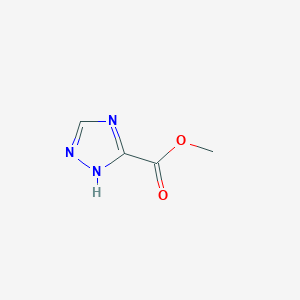-
Categories
-
Pharmaceutical Intermediates
-
Active Pharmaceutical Ingredients
-
Food Additives
- Industrial Coatings
- Agrochemicals
- Dyes and Pigments
- Surfactant
- Flavors and Fragrances
- Chemical Reagents
- Catalyst and Auxiliary
- Natural Products
- Inorganic Chemistry
-
Organic Chemistry
-
Biochemical Engineering
- Analytical Chemistry
- Cosmetic Ingredient
-
Pharmaceutical Intermediates
Promotion
ECHEMI Mall
Wholesale
Weekly Price
Exhibition
News
-
Trade Service
The National People's Congress recently voted to pass the Biosecurity Act, which will come into effect on April 15, 2021.
the Biosecurity Law, which focuses on the main risks in the field of biosecurity, improves the institutional mechanism for the prevention and control of biosecurity risks, and focuses on improving the national biosecurity governance capacity.
total of 37 references to "human genetic resources" were mentioned in the Bill, of which Chapter VI provided for the protection of human genetic and biological resources in more than a thousand words, which attracted wide attention from the medical profession.
Chapter VI of the Biosecurity Law states that in order to obtain the relevant drugs and medical devices to be licensed for listing in China, international cooperation in clinical trial institutions using human genetic resources in China for international clinical trials and exit without involving human genetic resources does not require approval;
foreign organizations, individuals and institutions established or actually controlled by them shall not collect or preserve human genetic resources in Our country, and may not provide human genetic resources of our country abroad.
This is in line with the Interim Measures for the Management of Human Genetic Resources (1998.6.10), the Guide to Services for the Collection, Collection, Sale, Export and Exit Approval of Administrative Permits for Human Genetic Resources (2015.7.2), The Notice on optimizing the administrative approval process for human genetic resources (2017.10.26) and the Regulations of the People's Republic of China on the Administration of Human Genetic Resources (2019.5.28) have for the first time increased the "human genetic resources" to an important national legal level.
Medical research can not be separated from the definition of HGR Human Genetic Resources (HGR) in China, as early as June 10, 1998, the implementation of the Interim Measures for the Management of Human Genetic Resources: Human genetic resources refers to the human genome, genes and their products contain organs, tissues, cells, blood, preparations, recombinant DNA structures and other genetic materials and related information.
, as defined in the forthcoming Biosethics Act, human genetic resources include human genetic resources materials and information on human genetic resources.
human genetic resources refers to organs, tissues, cells and other genetic materials containing the human genome, genes and other genetic materials.
of human genetic resources refers to information such as data generated from the use of human genetic resources materials.
the importance of HGR in the pharmaceutical industry was reflected in the 1980s.
In 1986, Nobel Prize-winning physiology or medicine laureate Durbeko published a paper in the journal Science entitled "The Turning Point in Cancer Research: A Full Sequence Analysis of the Human Genome", which for the first time suggested that the occurrence of human diseases, including cancer, was directly or indirectly related to genes.
The completion of human genome sequencing in 2003 opened a new chapter in the development of biomedicine, biotechnology showed explosive growth, especially with the beginning of the trend of targeted drug development associated with genetic mutations, the industry generally believed that in order to understand the mechanism of cancer occurrence, evolution, invasion and metastasis, the genome of human cells must be fully sequenced.
In other words, where drug development and disease tracing are carried out today, research using HGR is essentially essential, since the transfer of raw material information from hospitals to laboratories for all patients is a "human genetic resource".
accepting genetic "torture" has become the norm in the industry, most people believe that as long as the sample does not leave the country will not involve HGR filing, when in fact it is not.
an industry insider engaged in clinical trial research declaration in an interview with the Pharmaceutical Rubik's Cube, said that the smooth development of a clinical project can not be separated from the bid party, medical institutions, clinical CRO, third-party laboratory cooperation.
in accordance with existing regulations, any party involved in the project cooperation process involving foreign investment background must submit an application for HGR administrative license to the Category Chinese Office of Genetic Resources Management (the "Genetic Office") under the Ministry of Science and Technology.
with the development of China's pharmaceutical industry in recent years, the large-scale layout of foreign investment in the pharmaceutical industry has become a climate, the industry chain partners containing foreign investment components are not uncommon.
and in the actual operation of pharmaceutical companies, whether it is testing PK samples or PD samples, as well as the use of a variety of databases, completely non-foreign clinical projects have been very rare.
means that the pharmaceutical industry has become the norm in the industry to undergo genetic "torture" before conducting clinical trials.
"Projects generally require preIND, IND, ethics committee approval, genetic filing and hospital agreement signing before clinical trials can be initiated at the pilot center."
" the industry also mentioned, "But in recent years to encourage innovative drug development, IND has become an implied licensing system; hospitals such as Peking University Cancer Hospital, Shanghai Oriental Hospital and other hospitals have also put the ethics review work ahead, can be synchronized with IND, greatly shorten the bid waiting time;
" reporter from the Ministry of Science and Technology under the government service platform learned that the current genetic office has been "Chinese types of genetic resources administrative licensing matters" approval process has been simplified, the average approval time gradually shortened to 1 to 2 weeks.
, however, some respondents said that the time for publicity only represents "approval time" and does not include the waiting time to enter the system and the time for enterprise supplementary information.
the time to wait for the replacement information, generally from the first time the enterprise to the genetic office to submit a filing application to finally get the relevant documents stamp signature, before and after about 2 to 3 months.
addition, because many businesses in the pharmaceutical industry may be involved in customs entry and exit-related business, such as single anti-culture medium, virus strains, testing reagents, related equipment, etc. need to go through formal customs clearance procedures.
the relevant procedures in the genetic office "wait" for a longer period of time, in some urgent cooperation projects, there has been the phenomenon of carrying HGR out of the country.
"HGR has risen to the level of biosecurity law, and that should be less and less so in the future," he said.
," said another interviewee.
In combing through corporate risk factors, the
reporter found that some innovative pharmaceutical companies that have been or intend to be IPO on the Hong Kong Stock Exchange, such as Pharmaceuticals, Reding Pharmaceuticals and other companies, have listed as one of the corporate risks "failure to obtain regulatory approval and/or to complete the record filing of the collection, preservation, use and export of human genetic resources in China". according to the
Risk Alert, foreign bidders and Chinese clinical trial units are required to obtain approval from the Category Chinese Office of Genetic Resources Management, an agency under the Ministry of Science and Technology, to collect any biological samples containing the genetic material of class Chinese subjects and to conduct any cross-border transmission of samples or related data.
according to the Ministry of Science and Technology's government service platform, one of the key approval points of the review and approval process of the Category Chinese Genetic Resources Management Office is the arrangement of intellectual property sharing between China and foreign countries.
parties are required to share patents for inventions arising from the sample.
such as the Chinese Approval for International Cooperation in Genetic Resources applies to the regulation and management of international cooperation scientific research on the use of category Chinese genetic resources.
international cooperation projects involving China's human genetic resources must be approved by the Chinese cooperation unit, which is also one of the matters that the pharmaceutical industry needs to consider in cross-border transactions.
"In the past, the genetic office review is no big deal, not only related to scientific issues, but also to examine ethical issues, not only will there be the same problem of repeated approval, but also because the form filling standards are not uniform, conflict of laws and regulations, change approval procedures and other reasons to return the project to re-declaration."
" respondents said, "As the industry continues to file more and more projects, the more time and effort it will take for the Genetics Office not to change the original process."
" even said that the current impact of new drug research and development of the "card neck" link is not CDE, but in genetic.
it is true that the enactment and implementation of the Biosecurity Act is conducive to enhancing the national biosecurity governance capacity, but also hope that the law with the times, as far as possible not to become a "stumbling block" in the development of new drugs.







